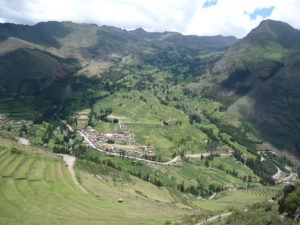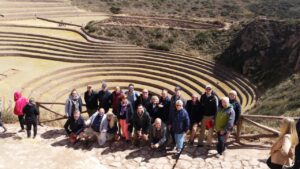Sacred Valley
The beautiful valley close to Cusco
Sacred Valley of the Incas
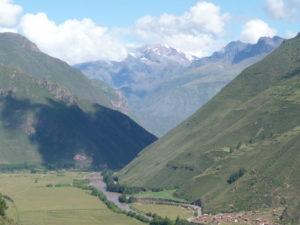
The Sacred Valley of the Incas is located in the Cusco region, at about an hour by car from Cusco. The capital of this valley is Urubamba. But the valley is more known for its interesting Incas sites. The Sacred Valley starts in Pisac where you will find beautiful Inca ruins. And following the Urubamba River (also known as Vilcanota River), it leads you through Calca, Urubamba, Ollantaytambo with an amazing Inca site, and the valley ends more or less in Machu Picchu. A distance of about 100 kilometers, although the road along the river only takes you from Pisac to Ollantaytambo. The Incas knew this river as the Sacred River, so that is where the valley has got its name from.
The intensely cultivated valley floor is about 1 kilometer wide on average. Side valleys and agricultural terraces expand the cultivatable area. And on both sides, the valley is surrounded by high mountains, some of them with eternal snow. The main crop was and still is corn (maize).
The Sacred Valley was an important part of the Inca Empire. Nowadays it is an important tourist destination with amazing views!
Climate & Altitude
The Sacred Valley is located a little lower than the city of Cusco (3399 meters above sea level). This makes the valley a good place to acclimatize. The altitude of the main places in the Sacred Valley are Pisac at 2972 meters above sea level, Urubamba at 2871 meters and Ollataytambo at 2792 meters above sea level. Altitude sickness is not a big issue in the valley. If you stay below 3000 metes above sea level, only people who are very sensible to heights will have some simptoms. But if you go to Chinchero, Maras and Moray the altitude is comparable to Cusco.
As most places in the valley are located a little lower than Cusco, the average temperature is a little higher there. If we look at Urubamba, the daily temperature (day and night) is 14 degrees celsius. The temperature varies from 21 to 23 degrees celsius during day time to a night temperature of 4 to 8 degrees celsius. There is very little variation in temperature during the year, it doesn´t really matter if it is summer or winter. The only difference you will feel in the winter (Mid May – end of August) is that the nights are a little colder.
The rainy season is from November or December until the end of March. May till September is dry season so there is very little rain. This is the same in the entire peruvian Andes.
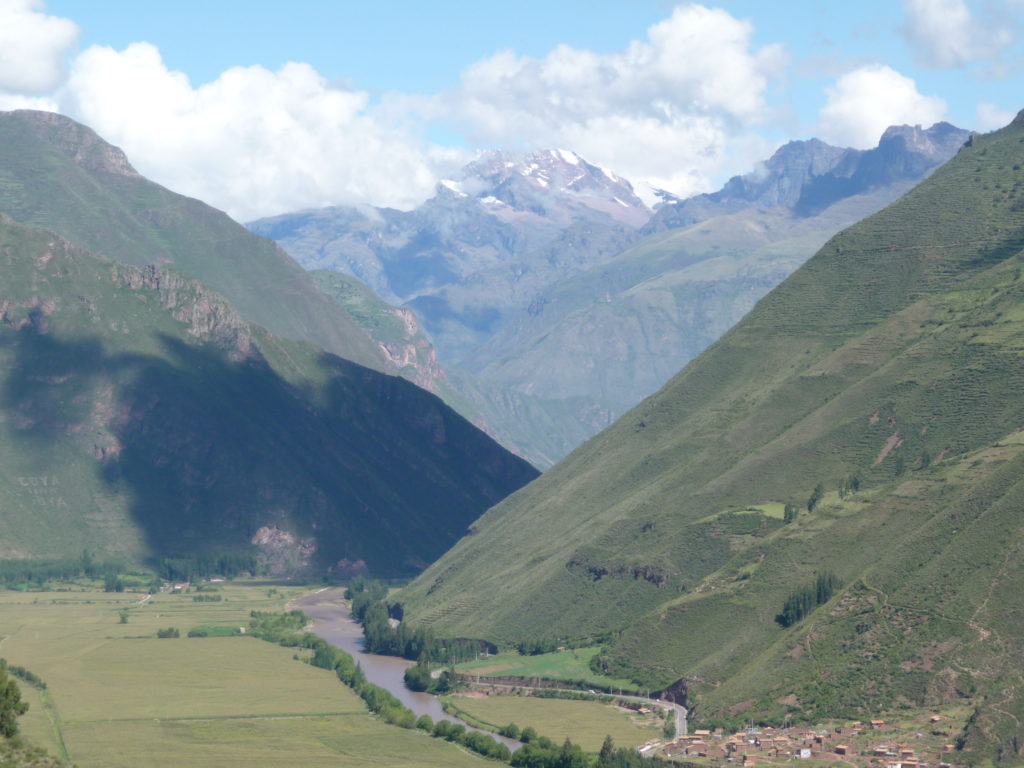
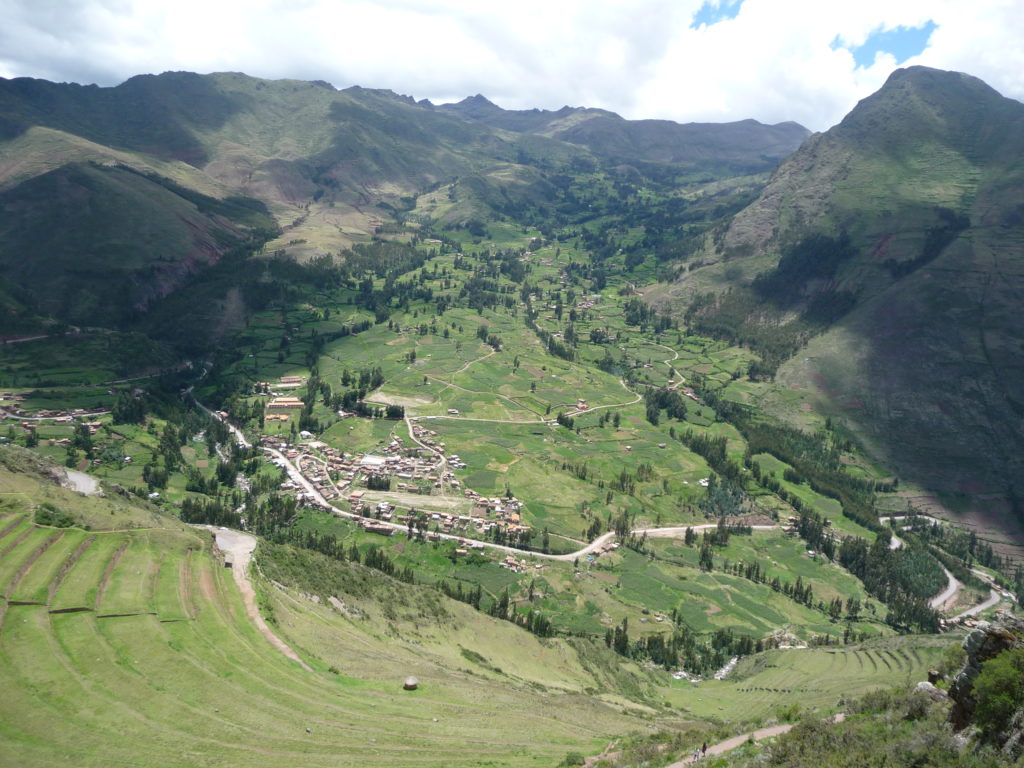
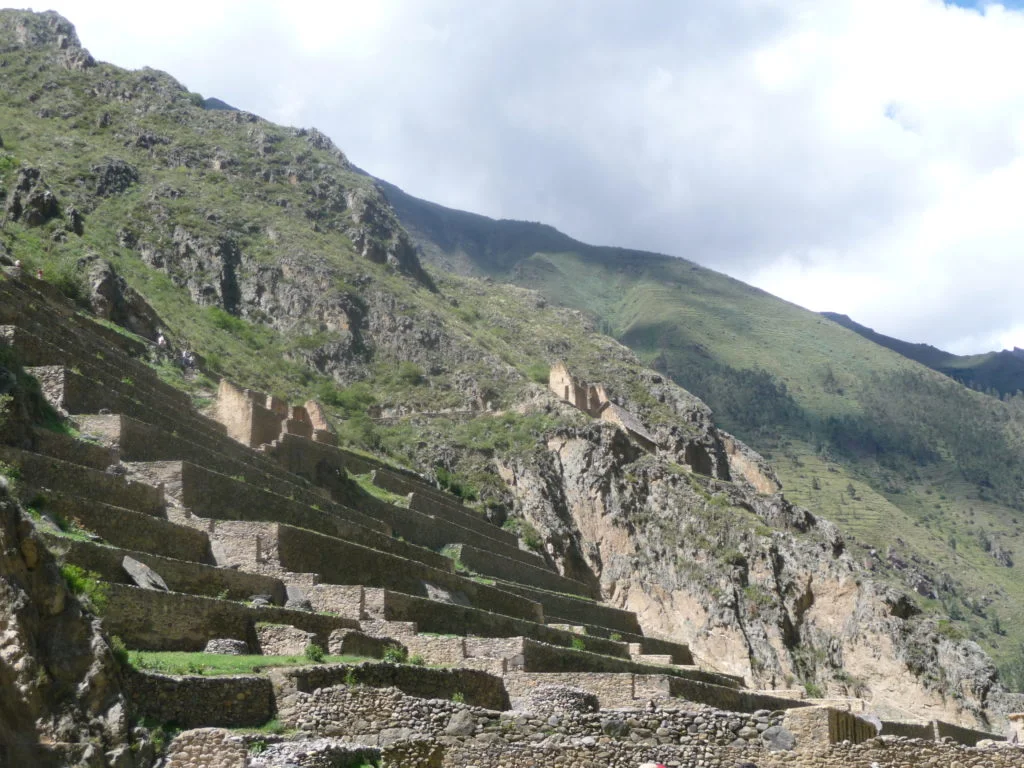
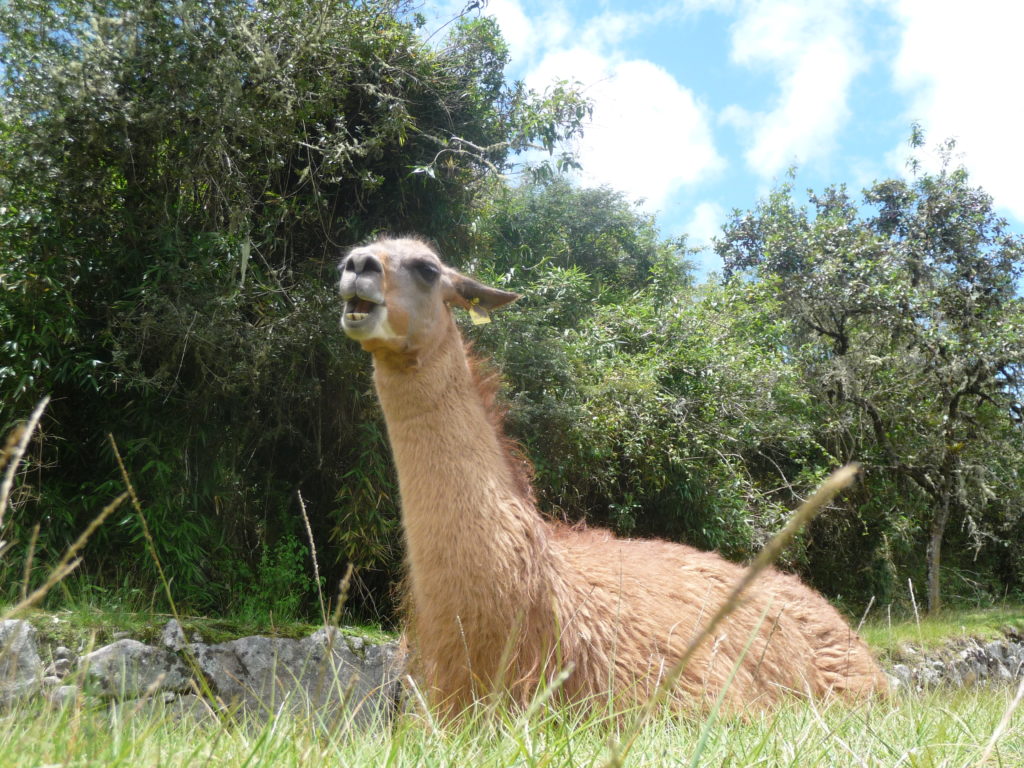
Pisac
Pisac market

Most people visit Pisac to see the market on Sunday, but there is also a (smaller) market on Tuesday and Thursday. But Pisac is a nice village and is worth a visit on any day of the week. A part of the market is for tourists, where you can buy mainly handicrafts. The other part of the market (mainly on Sundays) is where locals buy and sell there products. If you want to buy some handicrafts, this market is a popular place to do this. But you could buy the same handicrafts in Cusco as well, even at about the same price.
Pisac archaeological site
The archaeological site of Pisac controlled a route which connected the Inca Empire with Paucartambo. Paucartambo is a small town towards the jungle, famous for its folklore. The Inca ruins are pretty extensive. If visited on a Sacred Valley tour, you will only see a glance of it. So if you have the time, go for a full day to Pisac. Visit the town, the market and explore the ruins by yourself. The ruins, mainly the upper section of it, are beautiful. And the views, with the terraces of Pisac, looking over the valley are fantastic. The boleto turistico includes the ruins of Pisac.
Ollantaytambo
Archaeological site
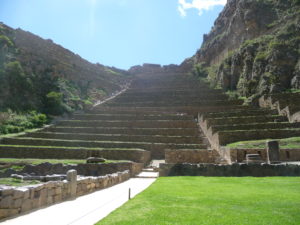
Ollantaytambo is a small charming town, located at the foot of the Inca ruins with the same name. The ruins controlled the entrance to this part of the valley. Steep terracing provided excellent defense. But there is also a temple area on top of the ruins. It is still unknown, how the enormous rocks were hauled up the mountain without the use of wheels. Probably they used thousands of workers. And nobody knows how the rocks were cut, because there was no metal hard enough to cut granite at that time. The ruins are beautiful and provide excellent views. The archaeological site is included in the tourist ticket (boleto turistico).
Train station
Ollantaytambo is also known for its train station. Not that the it is big or nice in any way. But it is the main station for your train to Machu Picchu, as many people take transport by bus or taxi from Cusco to Ollantaytambo and take the train from there. It is not the only station, you can also get the train from Poroy to Machu Picchu.
Urubamba
Urubamba is the largest town in and the capital of the Sacred Valley. It is a strategically important town in the middle of the valley, as almost every road in the Sacred Valley comes through Urubamba. Urubamba is located at about 53 kilometers from Cusco, about 70 minutes by taxi. Urubamba, at an altitude of about 2870 meters above sea level, has a pleasant climate. Tourists use Urubamba to acclimatize to the elevation to prevent altitude sickness and explore the Sacred Valley, Machu Picchu and Cusco from there. So you will find a wide range of hotels and hostals, but mainly the more luxurious hotels are located near Urubamba. But Urubamba itself has no tourist attractions, it is popular because of its strategical location, lower altitude and pleasant climate. As Urubamba is located strategically, normally you will have lunch in or near Urubamba with a Sacred Valley tour from Cusco.
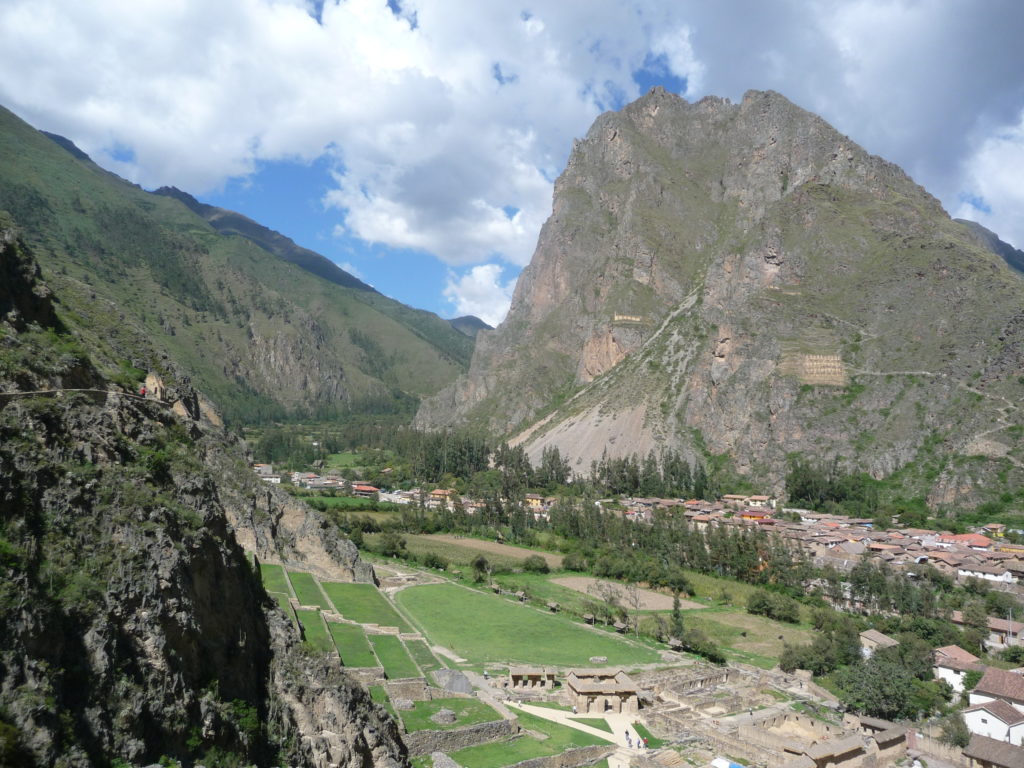
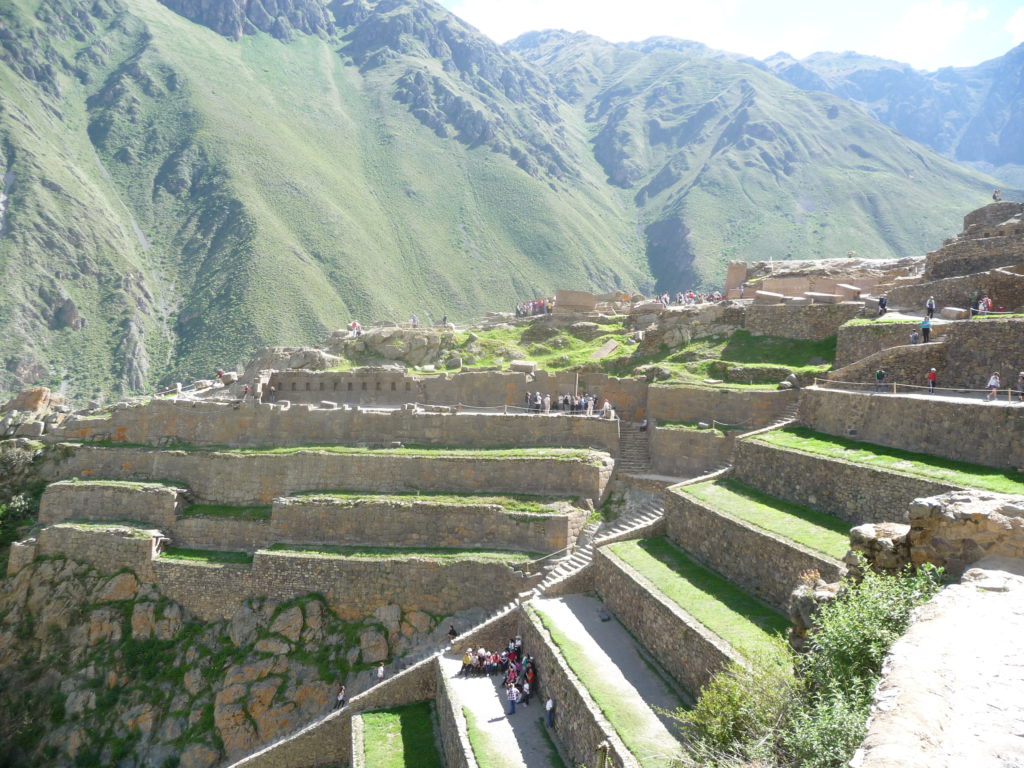
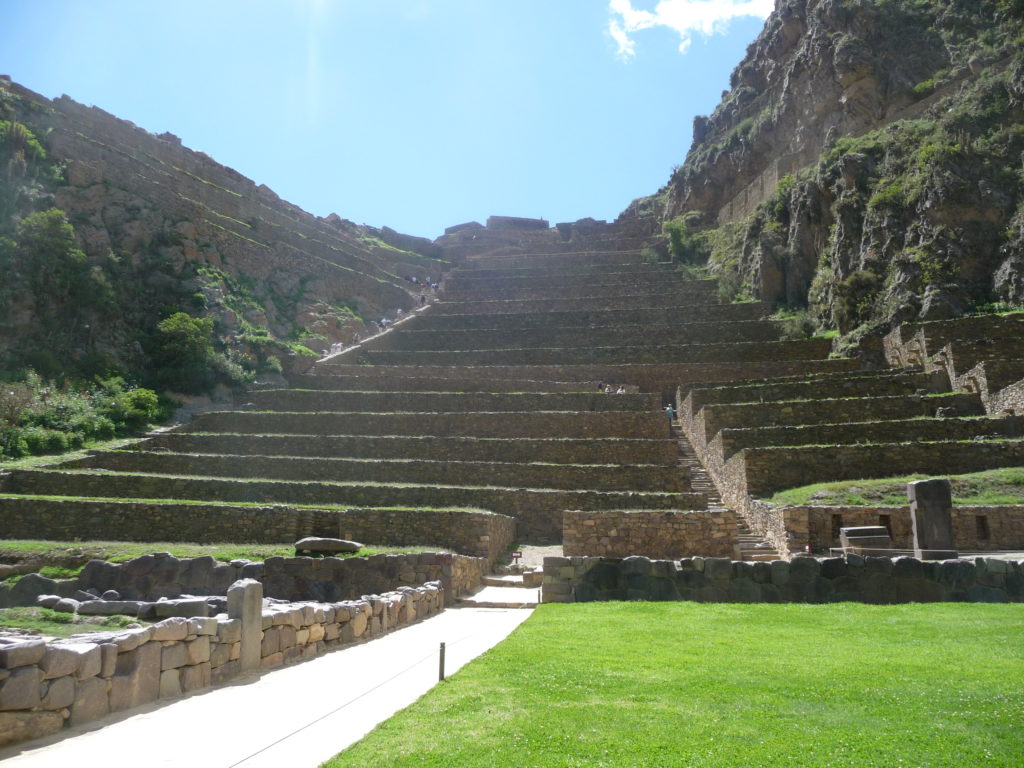
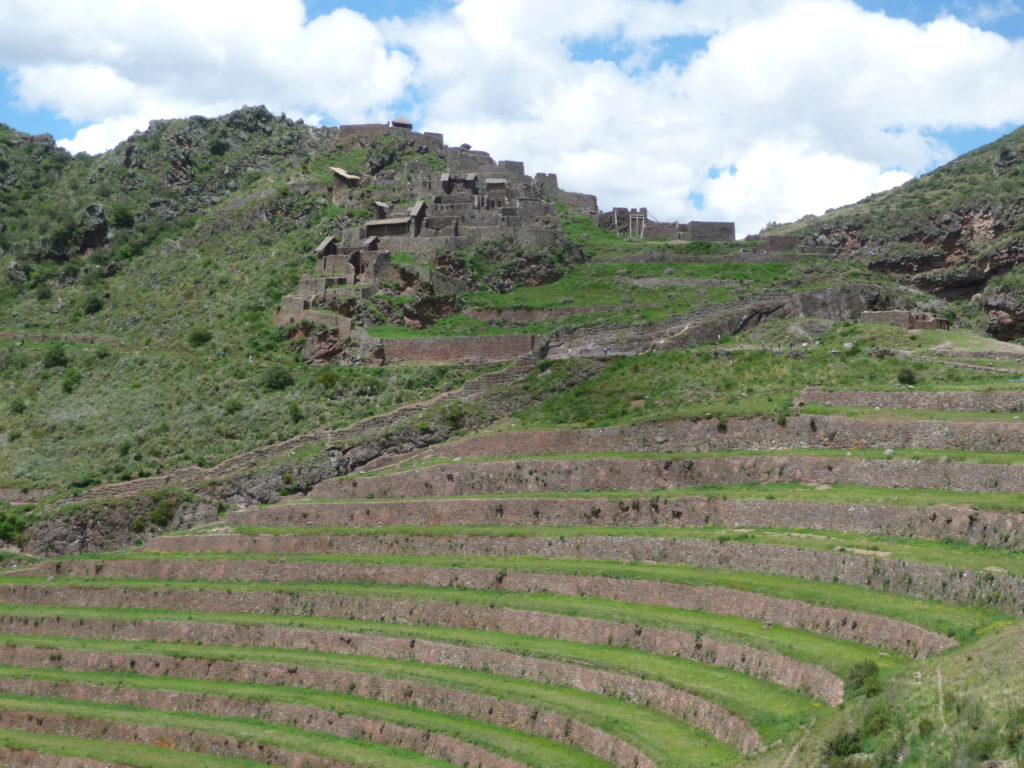
Chinchero
Chinchero is a small town located at about 30 kilometers from Cusco. The town is located at 3.765 meters above sea level. You will have amazing views over the Sacred Valley of the Incas and the snow-capped mountain peaks. Chinchero has a well-visited Sunday market, impressive stone walls and streets and a colonial church at the main plaza of Chinchero. Tourists visit Chinchero only for a quick look at the town and the plaza with its church and wall. Therefor there are no tourist hotels in Chinchero. Most people visit Chinchero with a short stop on a Sacred Valley day-tour. The boleto turistico includes the entrance to Chinchero.
Sacred Valley tour
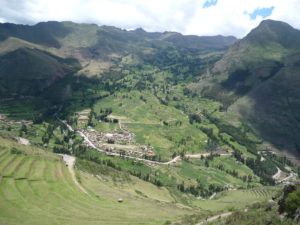
If you have lots of time, you can visit the Sacred Valley of the Incas a few times to have time to explore the ruins, town and markets of this beautiful valley by yourself. But if you do not have a lot of time, a full day tour to the Sacred Valley brings you to the most important places in the valley.
Most people visit the Sacred Valley as part of an organized Sacred Valley Tour. This is a full day tour from Cusco. The tour includes a visit to the market at Pisac, a stop for lunch in Urubamba, a visit to the beautiful Inca village and fortress of Ollantaytambo and a quick stop at the village of Chinchero on the way back to Cusco. Some day tours also include a visit to the ruins at Pisac. The Boleto Turistico (tourist ticket) includes the entrance to the ruins of Pisac, Ollantaytambo and Chinchero.
We offer the full day Sacred Valley tour in a group, including transport, lunch and guide.
Maras
Maras is a small town at almost 40 kilometers from Cusco, just passing Chinchero on the road to Urubamba. The town is famous for its salt pans. The salt pans are unique and well worth a visit. They date back to pre-Inca times and are still producing salt today. Warm salty water springs from a natural spring from the mountain. The water is directed with a sort of irrigation system into hundreds of terraced pans. They fill the salt pans with water, close them off and let the salt pan dry out in the sun. They collect the salt by hand and carried away by mules to Maras. The families of the local community manage the salt pans. The entrance to the Maras salt pans is S/. 10 soles, which is about $3 USD.
Moray
Moray is a very interesting archaeological site at about 6 kilometers west of the village of Maras. The place looks like a moon crater. Was it the Inca agricultural university? An Inca greenhouse, where experiments with different crops took place?
The rings at Moray may have been an ingenious series of test beds. Descending in grass-covered, terraced rings, these rings vary in size. The largest rings ending in a depth of 30 meters deep and 220 meters wide. The temperature at the top of the pits varies from that at the bottom by as much as 15º Celsius, creating a series of micro-climates.
These micro-climates match many of the varied conditions across the Inca empire. And many of the terraces contain soil that was imported from other parts of the region. So that is why most investigators believe that the rings were used as a test bed to see what crops could grow where. Especially for the main crop corn and possibly for others like the potato. It shows the special interest that the Incas had in food. This place is so special, there is no other culture known to have created such a place.
The boleto turistico includes the entrance to Moray.
Maras Moray tours
You can do a tour from Cusco visiting Maras and Moray. Most tours leave about 8am and come back in Cusco halfway the afternoon. There are many ways you can visit the sites. You can do the tour by mountain bike, go horseback riding, on a quad or by private transport like a taxi. Or you can go by public bus to Urubamba, get out of the bus near Maras and walk from there. If you want to visit these beautiful sites, please let us know. Please ask us for more information about the Sacred Valley of the Incas or about the Maras Moray tour!

